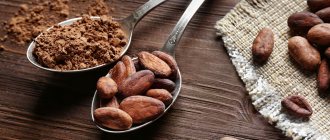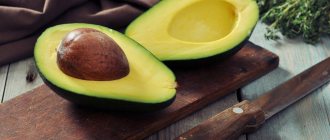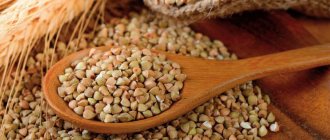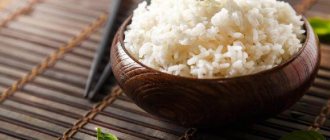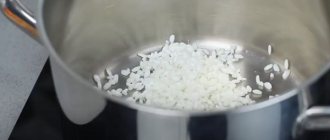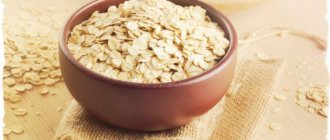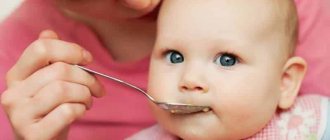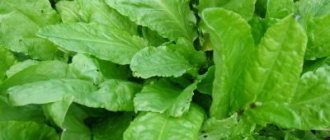Composition and calorie content of pearl barley
Pearl barley contains nutrients such as proteins, carbohydrates, fats, water and dietary fiber.
Mothers are interested in how many months old they can give pearl barley to their children. Despite its beneficial composition, you should wait to include it in your diet.
The porridge contains complex carbohydrates.
Barley contains vitamins E, PP and group B. It is also rich in minerals, including sodium, potassium, phosphorus, magnesium, iron and others. The energy value of pearl barley (100 g) is 315 kcal.
Cooking principles. Recipes for children
It should be taken into account that when cooked, cereals increase 4–5 times. Properly cooked pearl barley is soft, swollen, but not sticky. Below we offer recipes suitable for the children's menu.
Porridge on the water
Ingredients:
- cereal – 1 tbsp.;
- water – 4 tbsp.;
- sunflower or olive oil – 2 tbsp. l.
Sort the grains and rinse well. Boil water, add salt, add oil, add pearl barley. This porridge is cooked for about 1.5 hours, covered, over low heat. No need to stir. The preparation method is suitable for introduction into complementary foods.
Chicken soup with barley
Ingredients:
- chicken fillet – 200 g;
- medium-sized tomatoes – 4 pcs.;
- pearl barley – 100 g;
- potatoes (medium) – 5 pcs.;
- water – 3 l.;
- greens - optional.
Rinse the chicken thoroughly under running water and boil. Sort the grains and rinse, then, about 30 minutes before the fillet is ready, add to the broth. When ready, remove the meat, cool, and cut into small pieces. Wash the potatoes and tomatoes, remove the skins from them, and chop them into small pieces. Add to the broth, cook for about 20 minutes (until the potatoes are cooked). Then add chopped chicken, as well as washed and finely chopped greens.
The benefits of pearl barley
Porridge has a positive effect on the child’s body, which is due to its composition:
- Cereal dishes can be called sources of energy due to the complex carbohydrates they contain and the presence of amino acids. Lysine synthesizes antibodies to pathogens of viral infections, which prevents acute respiratory viral infections and exacerbations of herpes.
- Amino acids are involved in the production of collagen, which strengthens ligaments and promotes skeletal strength.
- The strength of teeth increases due to phosphorus and calcium.
- B vitamins are needed to maintain normal brain health.
- Thanks to dietary fiber, porridge improves the digestion process and prevents constipation in children. Helps cleanse the body of waste and toxins. This helps prevent allergies and improve kidney and liver function.
- Minerals regulate acid-base and water-salt balance.
- Vitamins PP and group B take part in metabolic processes.
How long can you start giving pearl barley to a child, many mothers ask. It has many benefits, but can also harm the baby’s body.
The benefits and harms of pearl barley porridge
Pearl barley is made from barley by processing its grains by grinding. This allows you to preserve maximum beneficial properties, which makes this cereal one of the most valuable in terms of nutritional qualities in the group of grain products.
Benefits of pearl barley porridge:
- saturates the body with nicotinic acid, which is necessary for the normal condition of the nervous and digestive systems, as well as the skin;
- Thanks to the phosphorus, cobalt, copper, manganese, molybdenum and chromium contained in pearl barley, the product is beneficial for the heart and blood vessels, fat metabolism, teeth and bones, as well as the functioning of the hormonal system;
- a large amount of fiber helps the intestines function properly, preventing constipation, putrefactive processes and other things;
- a large amount of B vitamins ensures normal hematopoiesis and promotes the proper functioning of the nervous system;
- Regular consumption of cereals improves brain function and memory ability;
- if a child has recently suffered an illness or surgery, pearl barley will help quickly restore strength, cheer up and improve mood;
- Regular consumption of cereals is the key to strong immunity;
- It has been proven that pearl barley improves the functioning of many internal organs, including the liver, kidneys and others;
- Eating cereals helps maintain healthy hair and skin.
There is practically no harm to pearl barley. It should be eaten with caution if you are prone to diarrhea, constipation, flatulence, increased stomach acidity, as well as in case of individual intolerance. Also, you should not be too zealous and cook pearl barley every day, since it contains a lot of gluten, which can accumulate in the body.
Pearl barley has emollient, antibacterial, diuretic, antiviral, antipyretic, enveloping, and antispasmodic properties. This makes it a truly invaluable food product for children.
Disadvantages of pearl barley
The main disadvantage of pearl barley is the presence of gluten in its composition. This is a special plant protein from cereals that can cause allergies in some people. The lack of an enzyme to break down gluten in the body is a hereditary pathology. Most often the diagnosis is made in an infant, but sometimes the disease is diagnosed at an older age.
Mothers ask when it is safe to give pearl barley to their children. It has some drawbacks, so rushing is not recommended. Children with gluten intolerance are contraindicated from eating dishes with barley. Disadvantages also include the following:
- Pearl barley requires a long time to cook. And heat treatment leads to partial loss of nutrients.
- Porridge is difficult to digest, so there are restrictions on eating barley dishes.
- It is a high-calorie product and is contraindicated for overweight children.
- Be careful when giving pearl barley porridge to children who are prone to flatulence and diarrhea.
Such manifestations can be caused by large portions of porridge, so barley should not be given to children suffering from gastrointestinal diseases.
Useful and harmful properties
Two thirds of this product are carbohydrates. Therefore, dishes made from this grain turn out extremely rich and satisfying. After eating pearl barley porridge, you will have enough strength and energy for a long time. In addition, the product includes vitamin E and B vitamins, amino acids, phosphorus and iron, iodine and other important compounds, minerals, elements. Pearl barley performs the following useful functions and properties:
- Kills germs, strengthens and supports the immune system;
- Restores strength, gives energy, invigorates and improves mood;
- Normalizes digestion and frees the intestines from toxins, waste and other harmful substances;
- Improves bowel movements and eliminates constipation;
- Positively affects the functioning of the liver and kidneys;
- Stabilizes blood sugar and insulin levels, prevents the development of diabetes;
- Strengthens bones and teeth, ligaments and joints;
- Provides tissues with oxygen, stimulates brain function, improves memory;
- Regulates material metabolism, water-salt and acid-base balance.
Among the disadvantages of pearl barley, we note that the cereal needs to be cooked for quite a long time, and the grains need to be soaked before cooking. In addition, it contains gluten. This is a sticky substance that is a strong allergen.
Barley porridge and other dishes with barley are digested for a long time and are difficult, so they can cause indigestion, pain and heaviness in the abdomen, increased gas formation, flatulence, problems with stool, and so on. You can find a complete list of gluten-containing foods here.
When to give pearl barley to a child
Porridge is a difficult-to-digest dish. Therefore, there are features for including it in the diet of children.
Mothers are interested in when they can give their child pearl barley. Experts recommend starting to include it in your child’s diet when he or she reaches 3 years of age. Over time, the digestive system will be more developed, and the supply of the gastrointestinal tract with enzymes will improve.
At what age can a child be given barley, mothers ask. Usually this can be done no earlier than 3 years. Like any new product, porridge on the first day is given no more than one spoon in the morning. During the day, parents monitor the child to exclude an allergic reaction. In the absence of undesirable symptoms, the portion of porridge can be increased to 100 g per day.
How and when to introduce it into the diet
Due to long absorption and the presence of gluten, pearl barley should not be given to children under at least 1 year of age. If there are no problems with the digestive system or allergies, pearl barley can be given from 1 year of age, but occasionally and in small quantities. In general, pediatricians and gastroenterologists agree that it is better to postpone the introduction of this cereal into children’s menus until 2 years of age when it comes to porridge; It is better to start introducing other dishes, especially multi-component ones, even later - from about 3 years.
It’s better to start your acquaintance with porridge without adding milk. First, the baby is given 1 tsp. ready-made porridge, after which they observe the reaction of his body for a day or two. If all is well, the dish can be offered about once a week, gradually increasing the portion to the norm. If signs of intolerance appear, barley should be excluded from the menu and seek advice from your local pediatrician.
So, we found out that first children are offered porridge with water and without adding other ingredients. But over time, it will be possible to diversify the dish by adding other cereals, fruits, seasonal berries and vegetables.
Children over 3 years old can be offered pearl barley with honey or jam (if there are no contraindications). Barley in milk is given after the introduction of a dairy-free option and not earlier than 2-3 years. As for soups, salads and other dishes with this grain, it is recommended to begin introducing them into the diet no earlier than 3 years.
What pearl barley to take for children
There are different ways to process barley. Ordinary pearl barley is obtained after removing the outer shells of the grains. It requires prolonged heat treatment. During the cooking process, nutrients are partially lost.
Deeper cleaning of grains with the removal of the awn makes the grain spherical in shape, called “Dutch”. The nutritional value of this porridge is slightly lower, but it boils faster. The dish has a delicate consistency.
Mothers are wondering at what age can they give pearl barley to children. To get healthy porridge, you need to choose the right product. When purchasing, the quality of cereal is assessed by its appearance and smell:
- there should be no debris or stones in the pearl barley;
- dry grains can be white, yellow and somewhat greenish in color;
- The cereal should not have an unpleasant odor.
When purchasing, pay attention to the production time. Although it is more than 2 years old, it is advisable to use cereal for children earlier. Store pearl barley in a closed container.
How to cook pearl barley
Before using the cereal, you need to sort it out. To do this, remove debris and rinse thoroughly with running water. To obtain crumbly porridge, you can use the following methods:
- First way. Pre-soak the cereal in water for 10-12 hours, which shortens the cooking time and reduces the loss of nutrients. To soak, pour a liter of water into a glass of cereal. In the morning, drain the pearl barley and place it in a cooking container. The volume of cereal increases several times, which must be taken into account when choosing a container for preparing porridge.
- Another option. The cereal is poured with one liter of water and boiled for an hour and a half. Then remove from heat and leave for 30 minutes. If you pour hot water over the cereal for an hour, the cooking time is reduced to an hour. The readiness of the porridge is checked by the consistency and type of grain; it should be swollen and soft. Add butter to taste. It can be put into ready-made porridge. It is best to eat pearl barley warm, as it tastes better.
- Third way. Porridge can be cooked in the oven. Pour boiling water over the cereal for 1 hour. After draining the water, place it in a heat-resistant container. For a glass of cereal - 600 ml of water. Then place in a preheated oven for about 40-45 minutes. And after turning it off - for another 30 minutes.
- Porridge with milk or water is perfectly prepared in a slow cooker. This will save a lot of time. You need to soak the cereal in cold water overnight, strain it and place it in the multicooker bowl. Add 400 ml of water to 200 g of cereal, add salt and butter. The “Milk porridge” mode is selected, regardless of whether it is cooked in milk or water. After finishing work, add butter or sugar to the porridge if desired.
Mothers ask at what age can children be given pearl barley. Children over 3 years old can prepare first courses with cereals. Barley is used instead of rice when preparing cabbage rolls.
At what age can pearl barley be given?
Pearl barley porridge is a difficult to digest product. Therefore, experts recommend starting to introduce it into the child’s diet when he reaches 3 years of age. By this time, the digestive system will be more formed, and the enzymatic support of the gastrointestinal tract will improve.
Like any new product, barley porridge should be given for the first time in a small portion - 1 spoon during breakfast. The child is monitored throughout the day to rule out allergies and celiac disease.
Manifestations of gluten intolerance may include:
- loose, copious, foamy stools;
- fetid, pungent odor of feces;
- the presence of undigested lumps of fat in the stool;
- bloating;
- pain along the intestines;
- rashes on the body like urticaria;
- loss of appetite.
If you notice the listed symptoms, you must stop giving the product to your child and be sure to contact your pediatrician to clarify the diagnosis.
In the absence of undesirable manifestations, the portion of porridge can be gradually increased to the age-appropriate daily norm - 100 g. If the monocomponent porridge is well tolerated, pearl barley can be included in a multicomponent dish.

